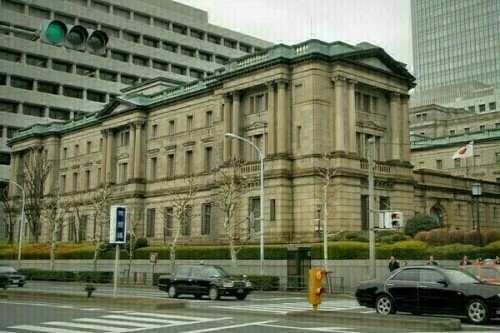Bank of Japan Signals Confidence in Wage-Inflation Cycle Amid Tariff Risks
TOKYO: The Bank of Japan (BOJ) is anticipated to indicate in the coming week that potential risks stemming from increased U.S. tariffs are unlikely to disrupt the cycle of rising wages and inflation. This cycle is considered essential for sustaining further interest rate increases, according to several sources familiar with the bank’s thinking.
The evaluation, which will be featured in the BOJ’s quarterly outlook report scheduled for release on May 1, will highlight the central bank’s intention to maintain market expectations for additional interest rate hikes, despite the possibility that the next adjustment may still be several months away.
One source stated, “Predicting the precise economic impact of tariffs at this stage is challenging.” However, they added, “It is evident that growing labor shortages will compel Japanese firms to continue raising salaries.”
Another source commented, “Risks have grown, but probably not enough to significantly alter the BOJ’s primary scenario of a modest economic recovery. The situation is unlike the COVID-19 pandemic, where demand suddenly collapsed.”
It is important to note that the wording is subject to revisions, as internal consensus on the report’s specifics within the BOJ has not yet been reached. The report will be finalized closer to the April 30-May 1 meeting.
Some analysts suggest that such a hawkish stance might assist Japan in countering criticism that Tokyo is deliberately weakening the yen to provide its exports with a competitive advantage.
Policy Meeting Expectations
During the two-day policy meeting concluding on May 1, sources indicate that the BOJ will likely lower its economic growth projections and caution about increasing risks from tariffs that are expected to negatively affect global demand.
The central bank may also postpone the anticipated timeframe for achieving its 2% inflation target sustainably, initially projected for the latter half of fiscal year 2025 in the January forecasts.
Nevertheless, sources suggest that the BOJ will largely maintain its perspective that a tight labor market will encourage companies to continue increasing wages.
Potential Challenges
Given ongoing market volatility, the central bank is widely expected to maintain short-term interest rates at 0.5% during the April 30-May 1 meeting.
However, numerous BOJ policymakers are hesitant to dismiss the possibility of future rate hikes entirely, considering the absence of concrete data on the economic impact of tariffs and the uncertainty surrounding the outcomes of bilateral trade negotiations.
Sources indicate that the BOJ’s updated estimates will be founded on uncertain assumptions that could quickly change in the coming months, due to the unpredictable nature of trade discussions.
A third source suggested that the most prudent approach for the BOJ at this time would be to remain patient, maintain a low profile, and await further clarity on developments. A fourth source noted the difficulty in establishing a baseline forecast under the current circumstances.
A potential challenge for the BOJ could arise from the expected meeting in Washington between Japan’s Finance Minister and the U.S. Treasury Secretary, where exchange rates are likely to be a key discussion point.
Some analysts contend that the BOJ’s ultra-low interest rates and the gradual pace of increasing borrowing costs could face scrutiny from the U.S. for keeping the yen weak.
Along with Finance Minister, BOJ Governor will be in Washington this week to participate in the G20 finance leaders’ gathering and the annual spring International Monetary Fund meetings.



Comments (0)
No comments yet. Be the first to comment!
Leave a Comment